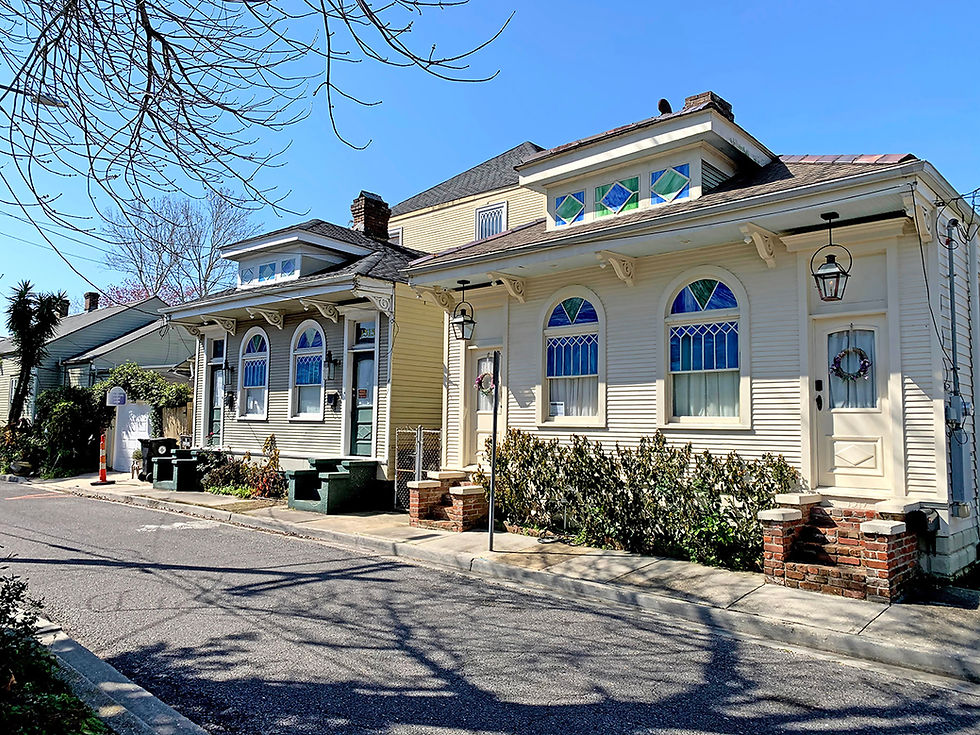Architecture Appreciation in the Time of Covid: Our Staff’s Recommendations
- LACHIN Architects
- Mar 1, 2021
- 2 min read
Updated: Mar 12, 2021
Now that the Covid pandemic has cancelled most of the usual indoor and group activities that Louisianians enjoy throughout the year, people who are tired of binge-watching Netflix may be ready to stretch their legs and get some fresh air. Here are some ideas from our staff for self-guided walking tours that take advantage of cool, humidity-free days while offering the opportunity to study our area’s unique architecture up close and at your own pace.

Faubourg Marigny – 18th and 19th Century Creole cottages abound in this downriver section of the old city. The area has seen a massive restoration movement in the last 40 years, and now is recognized around the country as a shining example of well-preserved and maintained original housing stock.
Riverfront and Bywater – Downriver from Marigny lies the 19th century neighborhood of Bywater. This area was originally the home of Creoles, citizens of French and Caribbean descent, and new immigrants from Ireland, Italy, and Poland. It hugs the river, and so was spared some of the ravages of flooding during Hurricane Katrina. It is currently home to a vibrant mix of long-time residents, artsy types, and newcomers. Access to the riverfront is one of the most attractive features of this area.

Cemeteries – There are so many interesting cemeteries in New Orleans that you could spend a year of weekends exploring. Holt Cemetery in Mid-City is a potter’s field that is the burial ground for several early jazz artists, including Buddy Bolden. Primitive and creative gravesites abound. At the opposite end of the wealth spectrum is Metairie Cemetery which boasts some of the most unique funerary architecture in the United States. In between are the many ancient cemeteries adjacent to the French Quarter, in Uptown, and in Mid-City.
Poydras Street – For fans of more modern architecture, a stroll down Poydras St. from the river to the Superdome offers an afternoon’s enjoyment. Landmarks include One Shell Square, the Federal Courthouse, the Piazza d’Italia, the Superdome, the Energy Centre, the Hyatt Regency, and the many sculptures in the neutral ground of Poydras.

City Park – At 1300 acres, there is a lot of ground to cover in City Park. Architecturally, the New Orleans Museum of Art, the Christian Brothers School, the Botanical Gardens, the Children’s Museum, the Peristyle, the Casino, and the Sculpture Gardens are some worthwhile sites to seek out. There are also numerous stone bridges throughout the park that were built by the WPA in the 1930’s. A bike tour would be a great way to see as much as possible, and a picnic lunch in the park is recommended.
A quick Google search of each of these areas prior to visiting will give you an idea of what to look for, and a brief history of the development of each of these neighborhoods.







Comments